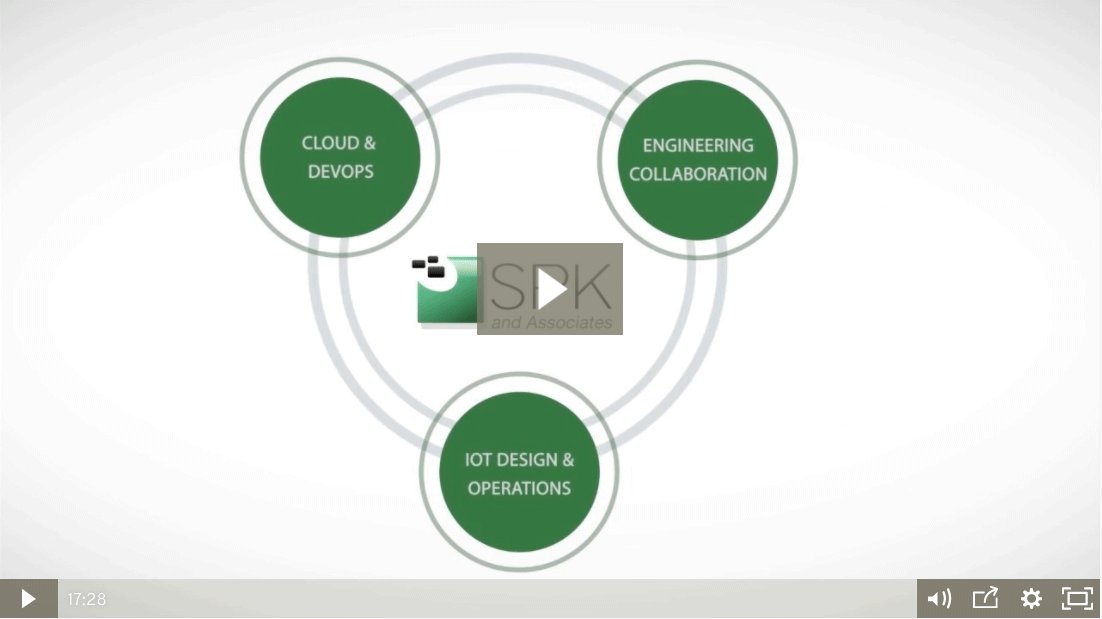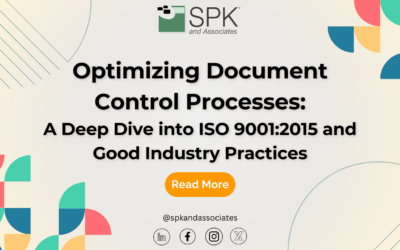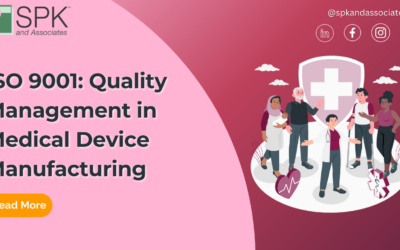In episode five of our podcast series “Can IoT Jump These Five Hurdles?”, SPK’s Director of Strategy, Rajiv Mistry, discusses systems standards and regulation challenges that could impede IoT’s future growth and effectiveness. Think VCR v.s. Betamax or Blu-Ray v.s. HDDVD. Rajiv explains how these vendor battles can be avoided in this booming IoT space. To see all published episodes, scroll down this IoT category page.
Transcript:
Ben: Hello, I’m Benjamin Hunting with the SPK and Associates podcast. And I’m here as always with Rajiv Mistry, the chief strategy officer at SPK and Associates. Today we’re discussing the Internet of Things. Rajiv, thank you very much for taking the time to be with us today.
Rajiv: Ben, thank you for having me. It’s a good thing to talk about. This is the last podcast in the series and we’re going to be talking about regulations, standards and the evolution around IoT.
Ben: And this is such an important topic when dealing with such a vast projected industry like IoT. Specifically when you’ve got billions of devices all talking together, it’s really important that they’re speaking the same language. And what kind of a role do you think standards will play, or international organizations will play, or industry will play in making sure that that same language is being spoken?
Rajiv: Well, there’s a few aspects in terms of IoT devices that are concerning in terms of regulatory compliance and standards. Firstly, it’s a Wild West right now because there are a lot of vendors excited about IoT enabled devices, and they’re designing devices simply using integrated product development, not considering the entire life cycle of the device from inception of the design all the way to the deployment and the end of life of the device. I think that we need to consider standards in terms of how these devices will communicate with each other, and with the IoT platforms, and how the IoT platforms will communicate with each other across platform vendors.
When there’s a device, it shouldn’t be something that has to go with one IoT platform vendor and not another. Otherwise we’ll have proliferation of similar devices that attach only to a given vendor. It’s called “stove-piped” solutions. This is a well-known term in data warehousing power lines.
Ben: And how can we avoid this potentially damaging standards war where you end up with major players creating silos where there’s no intercommunication between devices? Industry wide compliance seems like a very challenging thing to do, and is a top town approach the best where perhaps there’s an independent standards committee that involves industry through industry participation? Or is a some type of non-profit organization devoted to this one of the best ways to tackle it? It seems like there’s so many different ways that it could happen and be deployed.
Rajiv: Well Ben, there are a couple of things I want to cite as analogies. Firstly, if you remember, in the 90s there was a standards battle for Betamax and HDDVD remember? There was also the fight between Blu-Ray and standard. There are various battles that go on in terms of standards evolution between vendors. And one tends to win out over another due to various reasons, whether they’re technical, they’re economic, or simply market responses to initial sales, right?
From that perspective, I think it’s wise for the vendors who are designing devices and IoT platforms, to voluntarily come together and form consortium that agree on standards. The advantages can be tremendous. The old XML standard evolution, the whole evolution of MIDI for musical information digital exchanges happening for devices to communicate what notes they were playing, for example. These are things that evolve out of simply volunteering to a standard, okay? Of course, there was the need for visionary to come in and drive discussion, and the base that ensued. But eventually, you know, good things happened out of XML and MIDI.
In a similar way, I think for IoT devices, there needs to be some kind of standards that need to evolve fairly quickly. It’s even more urgent in this case because the rate of deployment for IoT devices is going to accelerate tremendously just in the next five years. Studies that are being cited, Business Insider came up with a study that has 24 billion devices deploying between now and 2021. And then you know, there are other companies like Cisco talking about 100 billion devices being deployed. How do we account for all these devices being able to stay compliant to standards so that we don’t have waste in terms of a single device being designed to connect to a single IoT platform and nothing else.
I think that’s wasteful because if there’s a device that’s doing the function appropriately for whatever it’s measuring through its sensors, it should be able to connect to multiple IoT platforms so that that front vendor is well positioned close to the device, can send the data to a platform vendor that’s providing something unique that the customer wants close to their offices. So you know, there’s need for standards to evolve.
And then there’s a regulation aspect of it, which is more along the lines of legal enforcement of compliance.
Ben: You know, we’re discussing so many different standards. It make me think, you mentioned consumer products like HDDVD, Blu-Ray, Betamax. Those are all very familiar touchstones for anyone who got burned by holding the wrong technology when the music stopped during that era. But I think about the world wide web, which ostensibly no one owns. It’s a globalized consortium that is divorced from industry in large part. And I’m wondering do you think there are past models for standardization, such as perhaps world wide web consortium that could be used as models for IoT in the future, or do you think this is something that’s going to have to find its own way?
Rajiv: There are lots of models. Even before the world wide web consortium existed, there have been voluntary bodies that came in engineering. If you remember turn of the century, turn of last century actually, there were boilers being used for powering steam locomotives and eventually generating electricity. And there was a boiler code that was developed so that you wouldn’t have exploding boilers all over the planet, okay? Steam tables were developed for being able to calculate boiler design and you know, this is something that came about a long time ago. And those standards were simply because people recognized if you don’t live up to these standards, we are going to have massive failures that injure people, okay?
With world wide web consortium, the standards have evolved really well, so that we now have information available across the world. And look at how available it has become? Because of standards compliance through just voluntary organizations coming together and saying, “Yes, we’ll abide by these standards,” right? The whole evolution of IP Version 6, again, standards compliance through volunteering to adhere to those standards. Why? Because IP Version 4, we started running out of IP addressing, okay?
So when there’s a need, there’s an invention that is complied to. But then when you start looking at regulatory needs, why do standards need to be enforced? With IoT devices, there are multiple industry verticals that are being impacted. The energy vertical, the in-home IoT monitoring space, the manufacturing space. There’s the medical device industry. And these have different slants to standards. And there’s only so much you can do with volunteering to comply with standards and norms. When there’s life-changing or life threatening impact, then the device has to be regulated in terms of what is it going to measure, and how is it going to end up being diagnosed.
For you know, the energy industry, it may be crucial to monitor how many revolutions has a wind turbine gone through before a blade is designated as ready to be replaced. Predictive analytics can go so far to predict it’s going to fail in the next three months. But if you have regulations saying don’t wait for the end of life, if a predictive metric is reached that says, “Okay, this turbine blade needs to be replaced. Go and replace it three months before,” okay? There’s are the kinds of regulations that need to be in place. Medical devices especially so.
When you start looking at how, you know, in the last three or four years, there have been a lot of variables, and a lot of mobile apps that came about measuring, you know, movement or heart rate, or you know, skin temperature. And then there were some applications that started diagnosing whether you had, you know, psoriasis for example. You look at a picture of an individual and you say, “Oh, your skin looks splotchy, and wow, you’re diagnosed with rheumatoid arthritis because you’re suffering from psoriasis. Really? Well, where’s the physician involved in doing the testing, right?
So the FDA came down heavy on these applications and said, “No, you will not diagnose things that are medical in nature.” And now, you know mobile applications are subject to FDA approval for any diagnostic intent, right?
Fast forward to IoT devices and intelligent medical devices, you’re going to need this kind of regulation. In fact, the FDA recently released a draft specification for medical devices that are intelligent or smart devices. The reason being they have so far been dealing with only medical devices that capture data and don’t respond to the data that they’re capturing. But when you have a closed loop system where a device can be commanded to control the sensor and the frequency at which it’s measuring the biometric signal, for example, in a bedside monitor or in an ambulatory device, you have a lot of data that can be used through machine learning to actually help diagnostics in real-time.
And when you start having this kind of machine learning capabilities that are going to aid the care team, the provider team, then of course, it should be subject to regulation. So you know, we do need the evolution of standards through a voluntary means with vendors coming together on a voluntary basis to form a consortium. We do need regulations across different vertical industries. And the two need to dove tail neatly so that the entire product life cycle, application life cycle, management aspects are now working within the defined boundaries of the standards and their regulations to stay compliant.
SPK actually offers complaint IoT design and operations as well as Cloud and DevOps, and engineering collaboration capabilities. So this is something that is very near and dear to our minds and I think we are going to see a lot action on this front in the near term.
Ben: And you know, one of the things that you just said made me think back to our previous podcast where we were discussing life cycle. And it’s one thing for, as we’ve seen with certain devices and Abode Flash for that, for example where the entire web industry and many mobile devices moved away from Flash as a standard due to security concerns over time. It’s one thing to not be able to play a Flash video on your phone, but it’s another thing if you have an implantable medical device that is no longer capable of meshing with the network that it was originally intended to because of a standards or compliance issue. You think about the concept of being left behind medically, what happens not to just those people, but to the devices themselves? Do they end up on a secondary market? How are they managed? How are companies going to be able to deal with a standard that unpredictably may leave their particular devices behind due to security or data, or safety concerns in the future?
Rajiv: Well, it’s a very prescient question that you’ve asked. And because when you look at this kind of scenario, and I’ve got an example. The example is the Nest thermostat. It was a fantastic acquisition by Google recently, right? And the Nest product is supposed to be a really awesome product because it’s a learning device. It learns whether you’re in the room or not, and whether you’re comfortable at a certain temperature or not when you’re in the room. And it starts to program your thermostat so that it triggers your air conditioning on and off in an intelligent manor, okay? It’s watching trends of occupancy in a room.
Well, what’s happened is after Google acquired Nest, there’s been some things that are being left in disarray. And the question is are the Nest owners going to be left out in the cold if Google decides to stop supporting Nest, okay? It may not happen right away. What about three to five years from now? If I installed Nest thermostats in my home, and they’re working perfectly, but now they’re no longer supported, that’s basically a device that’s connected but not supported in its connectivity, okay? How is that going to impact my home energy usage and how is it going to impact my bills for utilities? This is a concern.
When you look at medical devices, there’s the analogy of third world countries where there’s drug addicted populations that have a prolific reuse of needles. And so, you know, there’s initiators by UNICEF and the World Health Organization that are basically promoting distribution of needles to the addicted populations. Why is this important? It’s something that we have to consider for medical devices as well. And now just, you know, wearable devices or you know, devices that are ambulatory or bedside, but also implantable devices that are intelligent. What happens when a device is no longer connected because of standards not being complied with, or platforms that have evolved so the device no longer can communicate because there were no standards or regulations that were being adhered to.
If the device was functional yesterday, but is not going to be functional today, is it going to impact the health of the individual? That’s a very serious implication here. And I think regulation and standards compliance come to the primary point where you need system validation. And this is not just computer system validation we are talking about. We are talking about IoT system validation for intended use of health care, right? These are things that are nascent, but I think they need focus, as the case starting to focus on how to offer solutions that can give compliant IoT enabled medical devices. And we are starting to think of those solutions.
So it’s a pleasure talking to you about this.
Ben: Rajiv, it’s been a very fascinating series, this podcast discussing Internet of Things, and I know I’ve learned a lot, and the audience has been right there with us this entire time. So I want to thank you very much for your insights and for SPK and Associates being willing to put this out there for people to benefit from.
Rajiv: Ben, thank you very much for your efforts. Your questions were right on the mark. I couldn’t have asked them better myself. I wrote the blog. You made the questions after reading my blog, and here we are. I want to request the audience complete a short IoT MD survey that will appear in a link with this podcast. SPK will then use the results from the survey in designing our offerings. We are currently creating offerings for engineering collaboration, Cloud and DevOps, and IoT operations. Thank you very much for attending this podcast series. We will be looking for feedback and the participants will receive an invite for future webinars or podcasts that we conduct.
Ben: Rajiv, thank you very much for speaking with us today.







